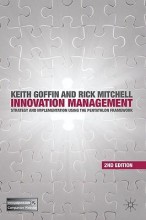Summary: Toxicology
- This + 400k other summaries
- A unique study and practice tool
- Never study anything twice again
- Get the grades you hope for
- 100% sure, 100% understanding
Read the summary and the most important questions on Toxicology
-
13 Introduction toxicology - Risk assessment
This is a preview. There are 5 more flashcards available for chapter 13
Show more cards here -
What are the objectives of toxicological sciences?
- Toxicological risk assessment: evaluation of the health and environmental risks of chemicals.
- Mechanisms underlying toxicity: acquisition of knowledge about the adverse effects of chemicals.
-
What are methods for hazard characterization?
- Qualitative: description of the effects
- Quantitative: indication of the dose levels of toxic effects and relationship between effect and duration of exposure
-
What are qualitative aspects of hazard characterization?
- Local effects versus systemic effects
- Target organ
- Primary lesion
- Reversibility
-
What are quantitative aspects of hazard characterization?
- Dose-effect relationship versus dose-response relationship
- Acute, subacute, subchronic and chronic exposure
- NOAEL and LOAEL
- Median effective dose (LD50)
- Acceptable versus Tolerable Daily Intake
- Uncertainty factors
- Interspecies and intraspecies difference
-
14 Molecular and cellular toxicology
This is a preview. There are 1 more flashcards available for chapter 14
Show more cards here -
Which cells are used for in vitro model systems?
- Primary cell cultures (freshly isolated tissue)
- Cancer cell lines (human immortal cancer cell lines)
- Immortalized continuous cell line (transformed cells)
- Pluripotent stem-cell derived tissue cells (embryonic stem cells, induced pluripotent stem cells)
-
Which cell components are likely to be involved in cellular damage?
The cell membrane, nucleus (chromosomes/DNA), ribosomes (RNA), lysosomes (autolysis) and mitochondria (ATP production). -
15 Endocrine toxicology
This is a preview. There are 12 more flashcards available for chapter 15
Show more cards here -
What are different types of hormone signalling?
- Intracrine
- Autocrine
- Paracrine
- Endocrine
- Neuroendocrine
-
What are the hormone classes?
- Protein and peptide hormones (amino acids)
- Steroid hormones (cholesterol or phospholipids)
- Tyrosine derivatives
-
What are characteristics of protein/peptide hormone receptors?
- G-protein linked receptors = extracellular hormone receptor
- Cell surface receptor = transmembrane receptor
-
What are thyroid hormone disrupting chemicals?
- Thiocyanate (SCN-) and perchlorate (ClO4-) inhibit iodide uptake
- Propylthiouracil and methimazole inhibit TPO
- Tributyltinoxide (TBTO) inhibits the production of TSH
- Hydroxylated polychlorinated biphenyls (PCBs) and brominated diphenyl ethers (BDEs) bind the TH transport proteins TBG and TTR and activate TR-induced gene expression
- Phenobarbital and Arochol 1254 induce uridine diphosphate glucuronosyltransferase (UDP-GT) expression
- Higher grades + faster learning
- Never study anything twice
- 100% sure, 100% understanding
































